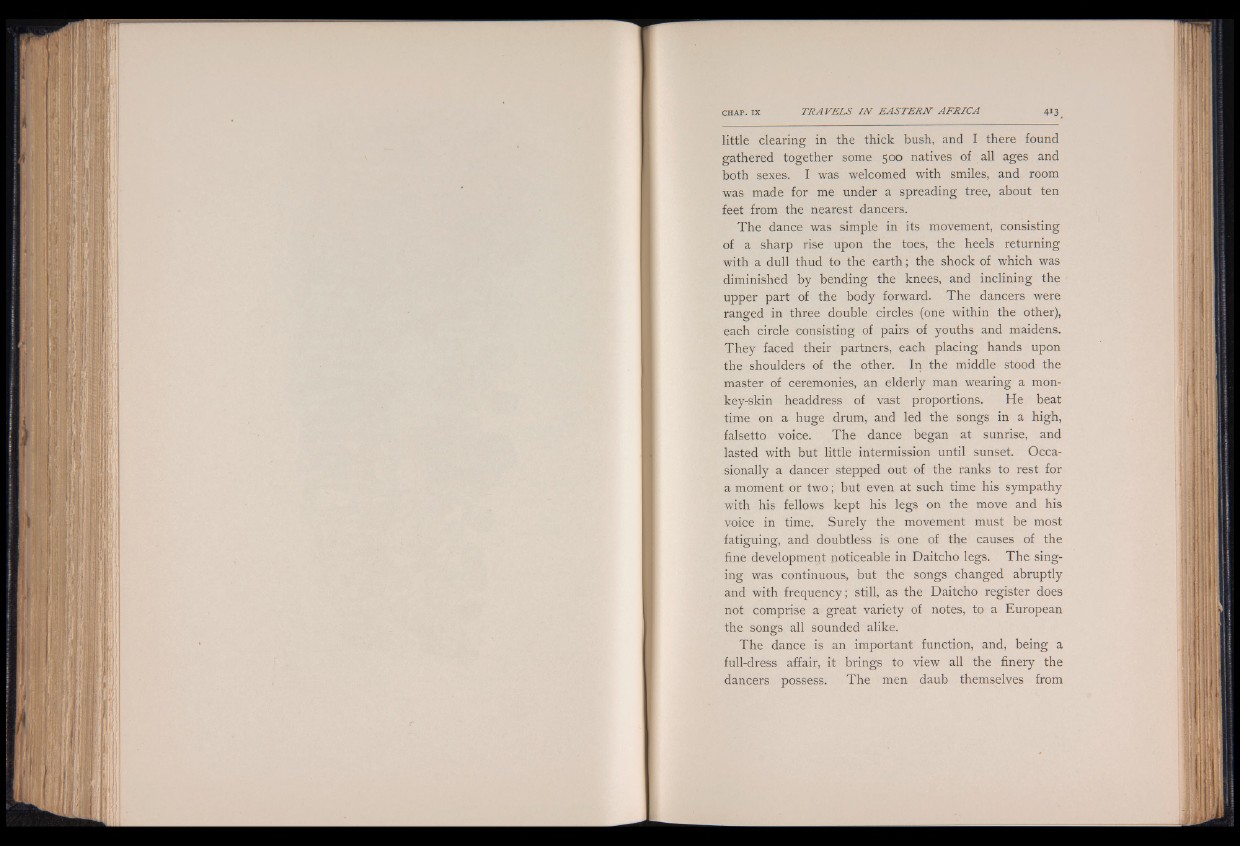
little clearing in the thick bush, and I there found
gathered together some 500 natives of all ages and
both sexes. I was welcomed with smiles, and room
was made for me under a spreading tree, about ten
feet from the nearest dancers.
The dance was simple in its movement, consisting
of a sharp rise upon the toes, the heels returning
with a dull thud to the earth; the shock of which was
diminished by bending the knees, and inclining the
upper part of the body forward. The dancers were
ranged in three double circles (one within the other),
each circle consisting of pairs of youths and maidens.
They faced their partners, each placing hands upon
the shoulders of the other. In the middle stood the
master of ceremonies, an elderly man wearing a mon-
key-skin headdress of vast proportions. He beat
time on a huge drum, and led the songs in a high,
falsetto voice. The dance began at sunrise, and
lasted with but little intermission until sunset. Occasionally
a dancer stepped out of the ranks to rest for
a moment or two; but even at such time his sympathy
with his fellows kept his legs on the move and his
voice in time. Surely the movement must be most
fatiguing, and doubtless is one of the causes of the
fine development noticeable in Daitcho legs. The singing
was continuous, but the songs changed abruptly
and with frequency; still, as the Daitcho register does
not comprise a great variety of notes, to a European
the songs all sounded alike.
The dance is an important function, and, being a
full-dress affair, it brings to view all the finery the
dancers possess. The men daub themselves from